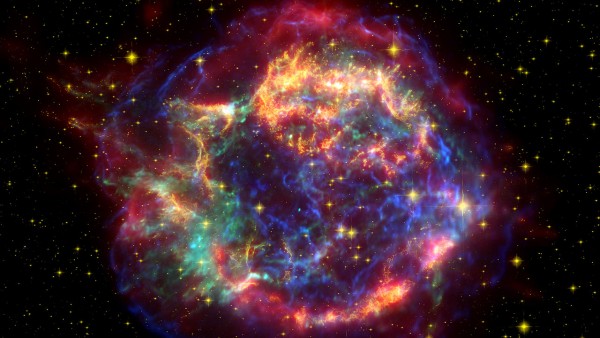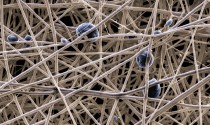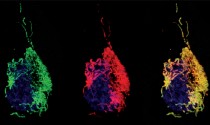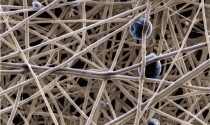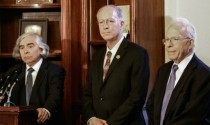Every second, trillions of neutrinos born at the center of the sun shoot through your body. They don’t hurt you, because these ghostly elementary particles almost never interact with matter. But astronomers report that nonetheless neutrinos forged much of the universe's fluorine, an element added to toothpaste and water to fight cavities and whose cosmic origin has long been mysterious.
In one way or another, stars created most of the chemical elements. With an atomic number of nine, fluorine sits between oxygen and neon on the periodic table but is much rarer than either. A massive star creates huge amounts of oxygen and neon during its life and then hurls them into space when it explodes, so both elements are common: Oxygen is the third most abundant element in the universe, after hydrogen and helium, and neon ranks fifth or sixth. In contrast, fluorine is so rare it doesn't even make the top 20.
Two astronomers—Catherine Pilachowski of Indiana University, Bloomington, and Cameron Pace of Southern Utah University in Cedar City—went looking for it. Using the 2.1-meter telescope atop Kitt Peak in Arizona, they searched 79 stars for a nasty gas named hydrogen fluoride (HF), which contains the element. "Terrible stuff," Pilachowski says. Breathing the gas can be fatal. But it absorbs infrared radiation and thus can leave a mark on a star's spectrum that the astronomers hoped to see.
The researchers detected the gas in 51 of their targets, by far the largest number of normal stars in which fluorine has been seen. As Pilachowski and Pace report in the September issue of The Astronomical Journal, the fluorine abundance they measure is so high that neutrinos must have created much of it during supernova explosions. When a massive star explodes, it unleashes 1058 neutrinos that are so energetic a few knock a proton or neutron off some of the star's many neon nuclei, producing fluorine. Other processes also create fluorine, but not enough to explain such high abundances, the astronomers conclude.
"It is really a large step forward," says astronomer Henrik Jönsson of the Lund Observatory in Sweden, who was not involved with the study. Pilachowski and Pace’s enormous sample size strengthens their conclusions, Jönsson says. That’s tall praise, because the new result seems to contradict his own work, which had found a lower fluorine abundance in a smaller number of stars. The low abundance indicated that all of the element could have been made in stars that do not explode, through nuclear reactions that don't involve neutrinos. So-called asymptotic giant branch stars are bright, aging suns that burn both hydrogen and helium, and astronomers have caught them manufacturing fluorine. When these stars die, they cast their outer layers —and their newly minted fluorine—into the galaxy at large.
So is the amount of fluorine in stars large or small? The answer may hinge on who is determining stellar temperatures correctly. Because hydrogen fluoride molecules break down at high temperatures, the spectra of warmer stars show less of the gas than those of cooler ones do—even if the warmer stars contain just as much fluorine. So to derive a reliable fluorine abundance, astronomers must know exactly how hot the star is. This summer, Jönsson used a larger Kitt Peak telescope, the 4-meter, to observe nearly 100 stars and hopes to measure accurate temperatures and hydrogen fluoride abundances for all.
Verne Smith, an astronomer at the National Optical Astronomy Observatory in Tucson, Arizona, who was not part of either research group, thinks the two studies indicate that both sources of fluorine are important. He suspects that supernova neutrinos made between a half and two-thirds of Earth's fluorine—in which case, you can thank particles that normally don't do anything for the cavities you never got.

